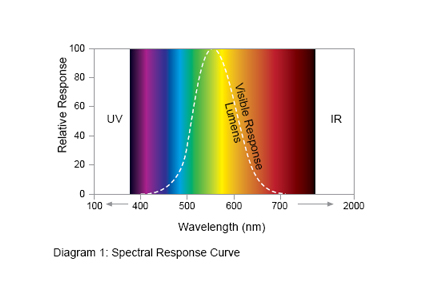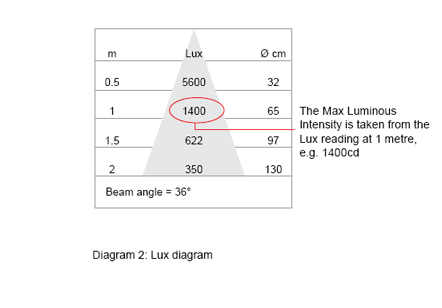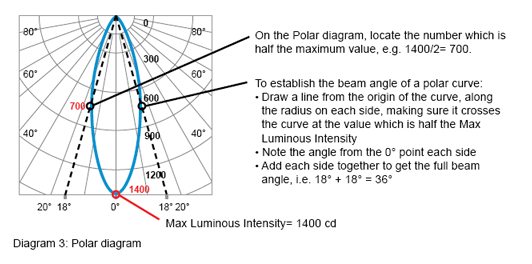Lumens ‘where you want them’ MEGAMAN®’s unique approach
MEGAMAN® has 3 different methods of controlling light but none involve the multiple lens arrays favoured by many manufacturers to direct light output. MEGAMAN® uses:
- Dual axially mounted LED using a parabolic reflector with TCH™ technology.
- Single LED plus optical reflectors for precise beam control where space is limited using total internal reflection within a clear solid form.
- LED plus prismatic controller for basic halogen equivalents.
This approach with all the associated advantages of precise beam control allows lumens to be where they are wanted with less glare.
In order to reproduce the superior light control you get from parabolic reflectors, MEGAMAN® position their dual LED using a unique axial geometry both replicating the traditional approach and allowing the optimum thermal control with MEGAMAN® TCH™ technology.
There are many reasons for using parabolic reflectors including:
- Better glare control with a clear cut off angle, compared to multiple lens arrays, because the source is better shielded outside of the beam.
- The use of a glare shield in combination with a parabolic reflector reduces uncontrolled light and ensures the light is precisely controlled.
- The parabolic reflector over many years has been proven to be the most efficient method for directing the light from a point source, so that maximum control is made of the lumen output.
- LED spotlights with parabolic reflectors are more aesthetically pleasing and conform to the expected appearance of a spotlight.
- The glass covers used on MEGAMAN® LED reflectors do not control the light but purely protect them from collecting dust. As such the covers can be very thin and thermally more efficient as they trap less heat compared to lenses.
Multiple lens arrays, glare & visual noise.
- Multiple Lens arrays over LED chips create uneven edges with striations, compromising the effect of the lighting.
- To give light levels similar to halogen, a multiple lens system uses several lenses in an array overlapping the output to try to create an even distribution of light within the beam, however in the process this produces a lot of side glare.
- Multiple lens arrays also create ‘visual noise’ due to each lens making its own slightly separate shadow, resulting in a fuzzy edge to any shadow cast.
Single parabolic reflectors using dual axial LED create a soft but precise beam and eliminates visual noise.
True replacement for existing halogen lamps
- All of the MEGAMAN® methods allow better thermal management, smaller heat sinks and true size retrofit profiles across the whole lamp range for direct replacement of traditional light sources which consume considerably more energy.
- When replacing halogen spotlights with LED spotlights MEGAMAN®’s unique approach provides the same light distribution, so the lighting does not need to be reconfigured.
Making optimum use of the lumen output through precise optical configuration, MEGAMAN® LED delivers the performance that lighting designers and their clients expect from spotlights.
MEGAMAN® goes even further achieving colour tolerances of just 100K and offers linear dimming from 1% - 100% with the designated driver and standard DC1-10V dimmer.
MEGAMAN® ’s unique approach with axial LED geometry, parabolic reflector, glare shield and patented TCH™ thermal control offers the best solution for precise comfortable low energy lighting for accent and display applications.
How to compare light sources and their efficiencies:
Non-directional light sources
Since non-directional light sources emit equal light levels in all directions, a good measure for the efficiency of the product is its luminous flux (lm) and overall lamp efficacy (lm/W).
The luminous flux, expressed in lumen (lm), is the total quantity of light emitted from a lamp in all directions. Since the human eye is not equally sensitive to all wavelengths within the visible spectrum, the emitted spectrum is weighted by the eye sensitivity curve and integrated over the visual wavelengths 380 – 760 nm.
Although wavelengths below (UV) and above (IR) the 380 – 760 nm range are not taken into account as they do not contribute to the visual spectrum, they can still have a damaging impact in sensitive applications such as museums, art galleries or food illumination. Paying attention to visible light and the consumed electrical power, the higher the efficacy number, the more efficiently the product converts electrical power into visible light.
Directional light sources


However, the efficacy measurement used for non-directional light sources cannot be transferred to directional ones, as unwanted light needs to be taken into account; glare from the edges of a beam of light, although often not useful light, does contribute to a higher efficacy number. So, with directional light sources an alternative form of measurement is required to show how well a lamp is directing light where it is wanted. The measurement for showing the power of a directional source is luminous intensity (cd). Luminous intensity quantifies the light emitted in a particular direction per solid angle and characterizes the output for a directional light source but this is not easily comparable to lumen per watt. So, EU directive 1194/2012 has defined a method to easily compare the efficacy of directional light sources and asks for a declaration by manufacturers of the useful light being light within a 90˚ cone measured in lumens, this is declared on the packaging and is a simple way to remove stray light from the efficacy number.
Luminous intensities in different directions, measured by means of a goniometer are plotted in polar diagrams. These show the light distribution of the directional light source and enable the beam angle to be determined. The beam angle of a directional light source is defined as the angle at which the luminous intensity is half of the maximum value. The maximum luminous intensity can also be obtained with the use of a lux diagram, since the maximum luminous intensity equals the lux level at a distance of 1 metre. MEGAMAN®’s LED range of products emit negligible output in both the UV & IR parts of the electromagnetic spectrum and are therefore the preferred choice in UV/IR critical applications.



 top
top